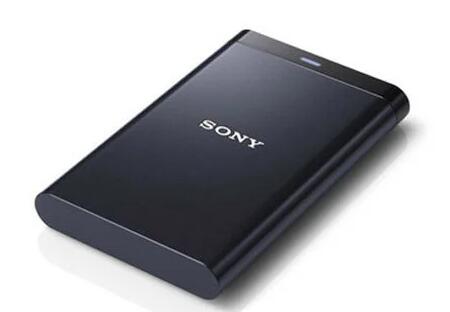1. Data Deletion
When you delete a file from your external hard disk, the data is not immediately erased; instead, the operating system marks the space as available for new data. This means that until new data is written over that space, the deleted files can potentially be recovered.
2. Initial Steps After Deletion
Before attempting recovery, there are a few important steps to follow:
a. Stop Using the Drive
Do Not Write New Data: If you continue to use the external hard disk after deletion, you risk overwriting the space where your deleted files are stored. Stop all operations immediately.

b. Check the Recycle Bin
Simple Recovery: If you deleted the files from your computer but not from the external hard disk itself, check the Recycle Bin (Windows) or Trash (Mac). If the files are there, you can easily restore them.
3. Using Data Recovery Software
If the files are not in the Recycle Bin, data recovery software can help. Here are some popular options:
a. Recuva (Windows)
Installation: Download and install Recuva on your computer, not on the external hard disk.
Scan Process:
Connect the external hard disk to your computer.
Launch Recuva and select the external hard disk for scanning.
Choose the type of files you want to recover (e.g., pictures, documents).
Run a scan; you can choose a deep scan for a more thorough search.
Recovery: Once the scan is complete, browse through the found files, select what you want to recover, and save them to a different drive.
b. EaseUS Data Recovery Wizard (Windows & Mac)
Setup: Install the software and run it.
Scanning: Choose your external hard disk and initiate the scan.
Results: After scanning, preview the files to confirm their recoverability and proceed to recover them.
c. Disk Drill (Windows & Mac)
Download: Install Disk Drill and connect your external hard drive.
Scanning: Select the external drive and click on “Search for lost data.”
Preview and Recover: After the scan, you can preview files and recover them as needed.
d. Stellar Data Recovery (Windows & Mac)
Installation: Install Stellar on your computer.
Scanning Options: Choose to scan the external hard drive.
File Preview: After scanning, you can preview recoverable files before finalizing recovery.
4. Manual Recovery Techniques
If you prefer not to use software or if the software doesn’t yield results, there are manual recovery techniques that can sometimes help, although they are more complex:
a. File History (Windows)
Restore Previous Versions: If you had File History enabled, you could right-click on the external drive in File Explorer, select “Restore previous versions,” and see if you can recover older versions of files.
b. Time Machine (Mac)
Using Time Machine: If you have a Time Machine backup, connect your backup drive, open Time Machine, and navigate to the date before the files were deleted to restore them.
5. Advanced Recovery Techniques
For more severe data loss situations, you may need to consider more advanced recovery methods:
a. Command Prompt (Windows)
Using Command Prompt:
Open Command Prompt as an administrator.
Type chkdsk X: /f (replace X with your external hard drive letter) and press Enter.
This command checks the drive for file system errors and may recover lost files in the process.
b. Professional Data Recovery Services
When to Seek Help: If the data is extremely valuable and software methods fail, consider hiring a professional data recovery service. They have specialized tools and expertise to recover data from damaged or corrupted drives.
6. Tips for Successful Recovery
Act Quickly: The sooner you attempt recovery after deletion, the higher the chances of success.
Use Reliable Software: Always use reputable data recovery software to avoid further complications.
Regular Backups: Set up a backup plan (e.g., cloud storage, external drives) to prevent future data loss.
7. Preventing Future Data Loss
To minimize the risk of losing files in the future, consider implementing these strategies:
a. Regular Backups
Automatic Backups: Use software that automatically backs up files to an external drive or cloud service on a scheduled basis.
b. Version Control
Keep Versions: Use version control systems for important files, allowing you to revert to earlier versions easily.
c. Safe Ejection
Eject Drives Properly: Always use the “Safely Remove Hardware” option to eject your external hard drive to prevent data corruption.
Recovering deleted files from an external hard disk can often be done using software solutions, but it’s essential to act quickly and stop using the drive immediately after deletion. Employing proper backup practices can help prevent future data loss and provide peace of mind. If you’re ever unsure about recovery methods, consult professionals to handle critical data safely.
About us and this blog
Panda Assistant is built on the latest data recovery algorithms, ensuring that no file is too damaged, too lost, or too corrupted to be recovered.
Request a free quote
We believe that data recovery shouldn’t be a daunting task. That’s why we’ve designed Panda Assistant to be as easy to use as it is powerful. With a few clicks, you can initiate a scan, preview recoverable files, and restore your data all within a matter of minutes.
Subscribe to our newsletter!
More from our blog
See all postsRecent Posts
- Hard drive recovery denver reddit 2025-02-28
- How to recover a deleted slide in powerpoint? 2025-02-27
- How to recover deleted capcut videos? 2025-02-27










